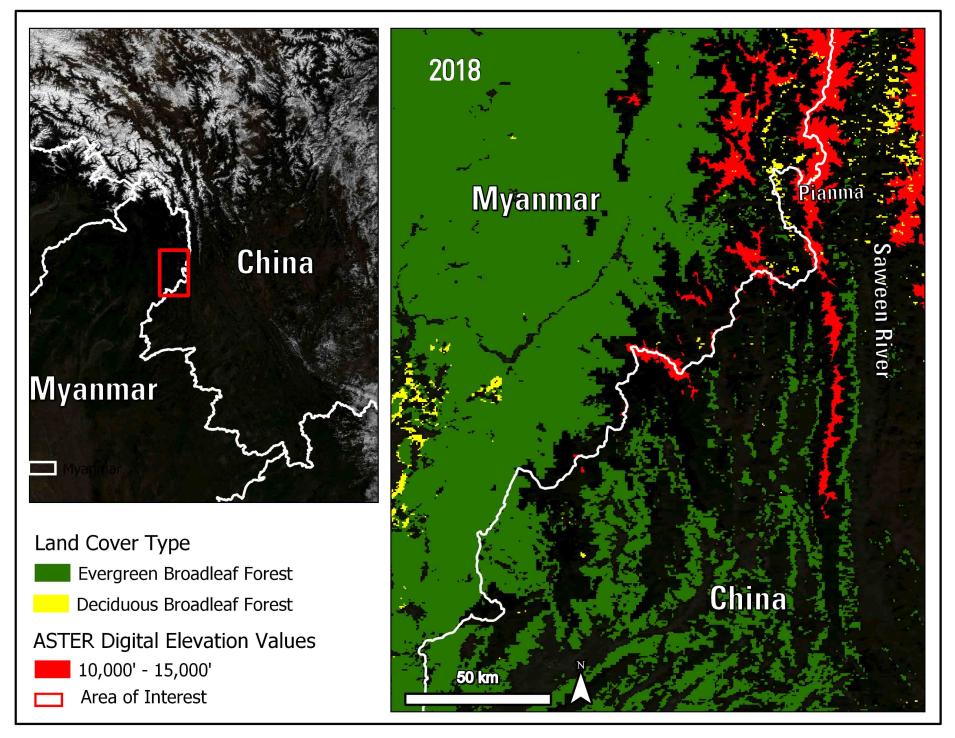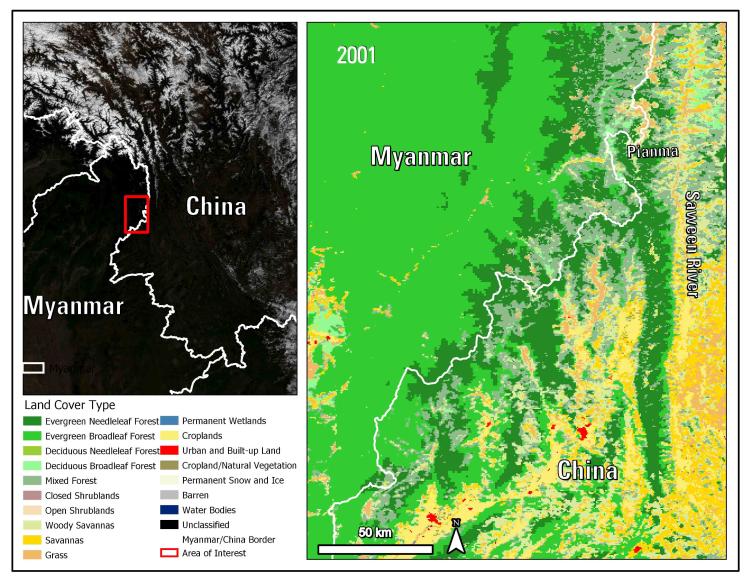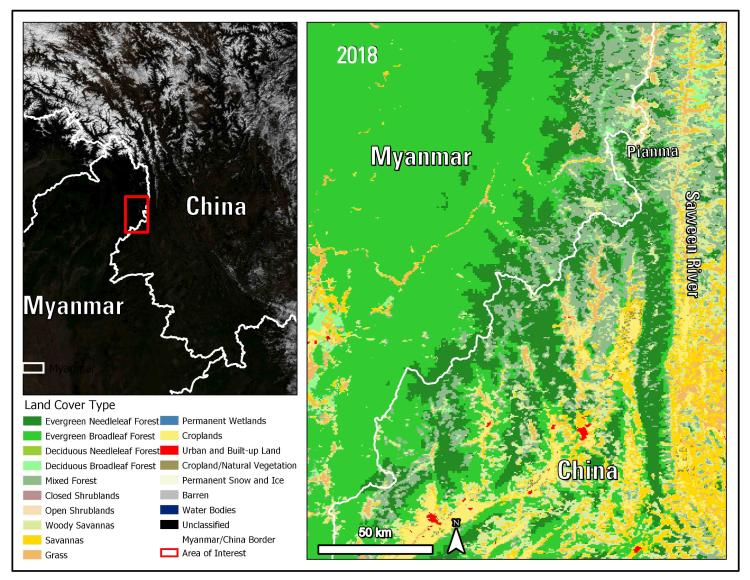Introduction
On the border of Myanmar and China, a very cute creature was discovered recently. Known as the black snub-nosed monkey, researchers came across it in Myanmar in 2010, and across the border in Pianma on the western slopes of the Gaoligong Mountains, in Yunnan, China, the following year. The black snub-nosed monkey is a relatively new subspecies of the monkey genus Rhinopithecus. This species of snub-nosed monkey is extremely rare and considered endangered, with a total population of fewer than 950 (Geissmann and others 2011; Chi and others 2014). According to the International Union of Conservation Scientists, the black snub-nosed is the most endangered of the known snub-nosed monkey species. This monkey occupies a very specific region of the world that contains moist evergreen broad-leaved forests and coniferous broad-leaved mixed forests (Geissmann and others 2011; Chen and others 2015) at a particular elevation. Identifying and observing the habitat of this monkey can be difficult, but with data from NASA's Land Processes Distributed Active Archive Center (LP DAAC) researchers can gain clues on where these monkeys might thrive and how their habitat is changing over time.
Science Objectives
What holds the endangered species to this distinct area? The answer may lie in its diet. The region contains a type of lichen that flourishes at 3,000 to 4,500 meters (m) (10,000-15,000 feet (ft)). These lichens grow in the coniferous forest that the black snub-nosed monkey calls home. The ability to digest lichen is extremely rare in primates. Black snub-nosed monkeys use their fermenting gut (much like a cow) to break down the lichen and use its nutrients. Since both the monkeys and the lichen are found at these elevations, researchers can use the Terra platform's Advanced Spaceborne Thermal Emission and Reflection Radiometer (ASTER) Global Digital Elevation (GDEM) (ASTGTM) to identify elevations in the region where the monkeys might be found for future conservation efforts or to identify suitable areas where the monkey may reside.



